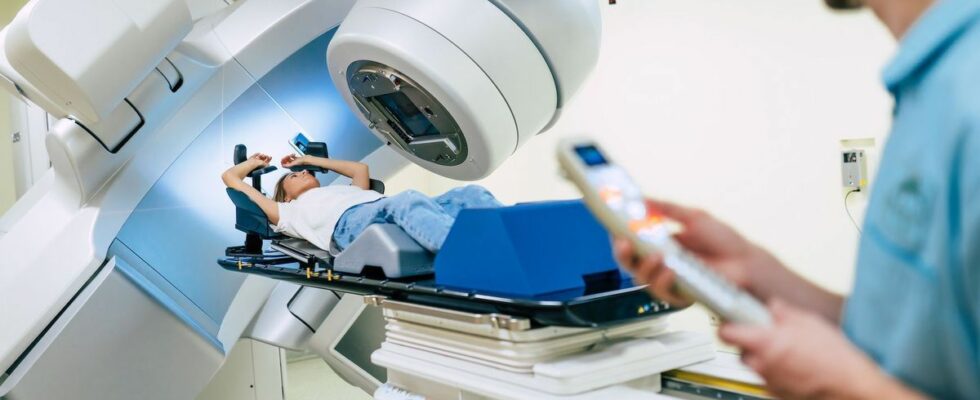Published on
updated on
Reading 2 min.
In recent years in France, several women have been victims of laterality error (i.e. sideways) during radiotherapy for breast cancer. Paradoxically, the error would be partly linked to technical progress. Explanations.
Confusing your right and left during medical treatment may seem absurd. However, according to the Nuclear Safety Authority, for several years, “laterality errors” (this is what errors on the “side” of the body are called) have been on the increase, particularly among women suffering from cancer of the breast who must undergo radiotherapy sessions.
About ten errors over two years
The information is noted by the daily 20 Minutes Today. At the beginning of 2024, a woman received 20 radiotherapy sessions in the wrong breast in Dijon. A few weeks later, a patient suffered the same trauma at the Montpellier cancer center. At the end of 2023, the same error was discovered at the CHRU Bretonneau in Tours and 25 of the 28 sessions were carried out on the wrong breast.
In all, there are less than ten incidents, out of 216,000 radiotherapy patient treatments in France in 2023-2024… But cases too many, without a doubt for these women who see it as a loss of opportunity.
Increasingly discreet techniques… which blur the lines
How can you explain your mistakes on a detail that seems obvious? For the Nuclear Safety Authority, the lack of personnel could be an avenue. But on the side of the National Union of Oncological Radiologists, the error would rather be linked to the growing progress in the treatment of breast cancer than to the professionals.
“Before, most women either had a breast removalor a clearly visible scar. It was impossible to go wrong. But for three or four years, it has become increasingly difficult to see which breast has been operated on.” explains a practitioner based in Vannes on a daily basis. The “tattoo point” which marked the chest of treated women for life has also disappeared.
On the side of the machines themselves, the error is also less visible. While the old ones approached the area to be treated (and the patient could point out the error in case of a bad side) the new ones revolve around the patient without targeting a particular breast, at least in appearance. In addition, redness and burning are also well reduced today. Spotting the consequences takes more time.
What vigilance to avoid error?
Faced with laterality errors, professionals today intend to redouble their vigilance, a point confirmed by Professor Véronique Vendrely, elected in January at the head of the French Society of Oncological Radiotherapy (SFRO). A working group bringing together professionals from the sector and the Nuclear Safety Authority should also be created to analyze each of the failures.
A first point would be to increase the number of checks by different people. Another solution could draw inspiration from the work of the Saint Yves de Vannes oncology center, which places a discreet thread along patients’ scars, during treatment, to identify the correct breast.
To go further, the president of the SFRO also wants patient files to be kept beyond 20 years (the current duration), so as not to risk irradiating the same area several times.

